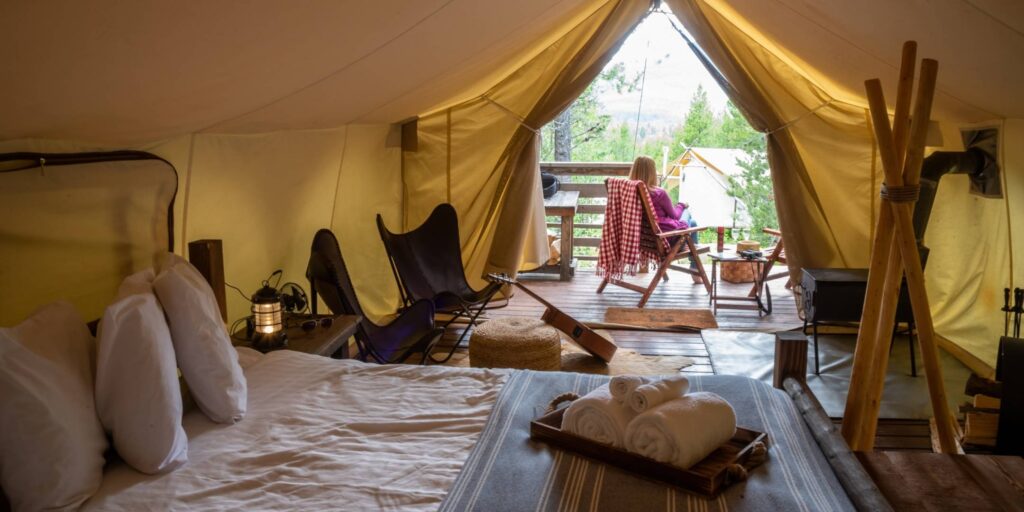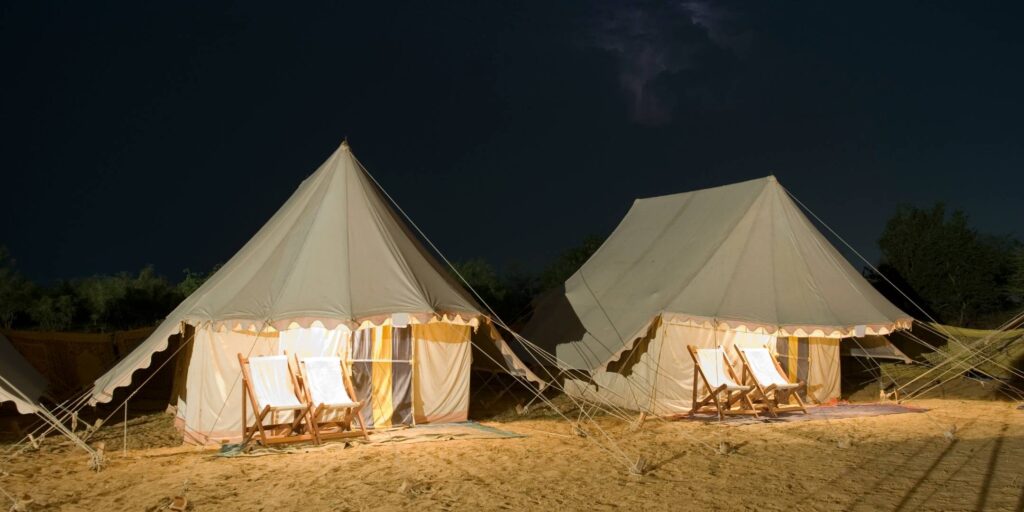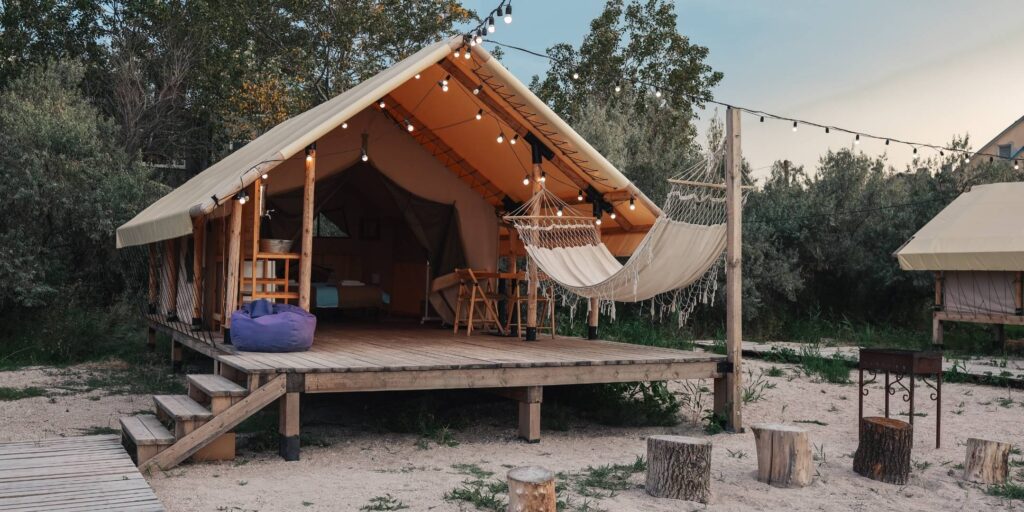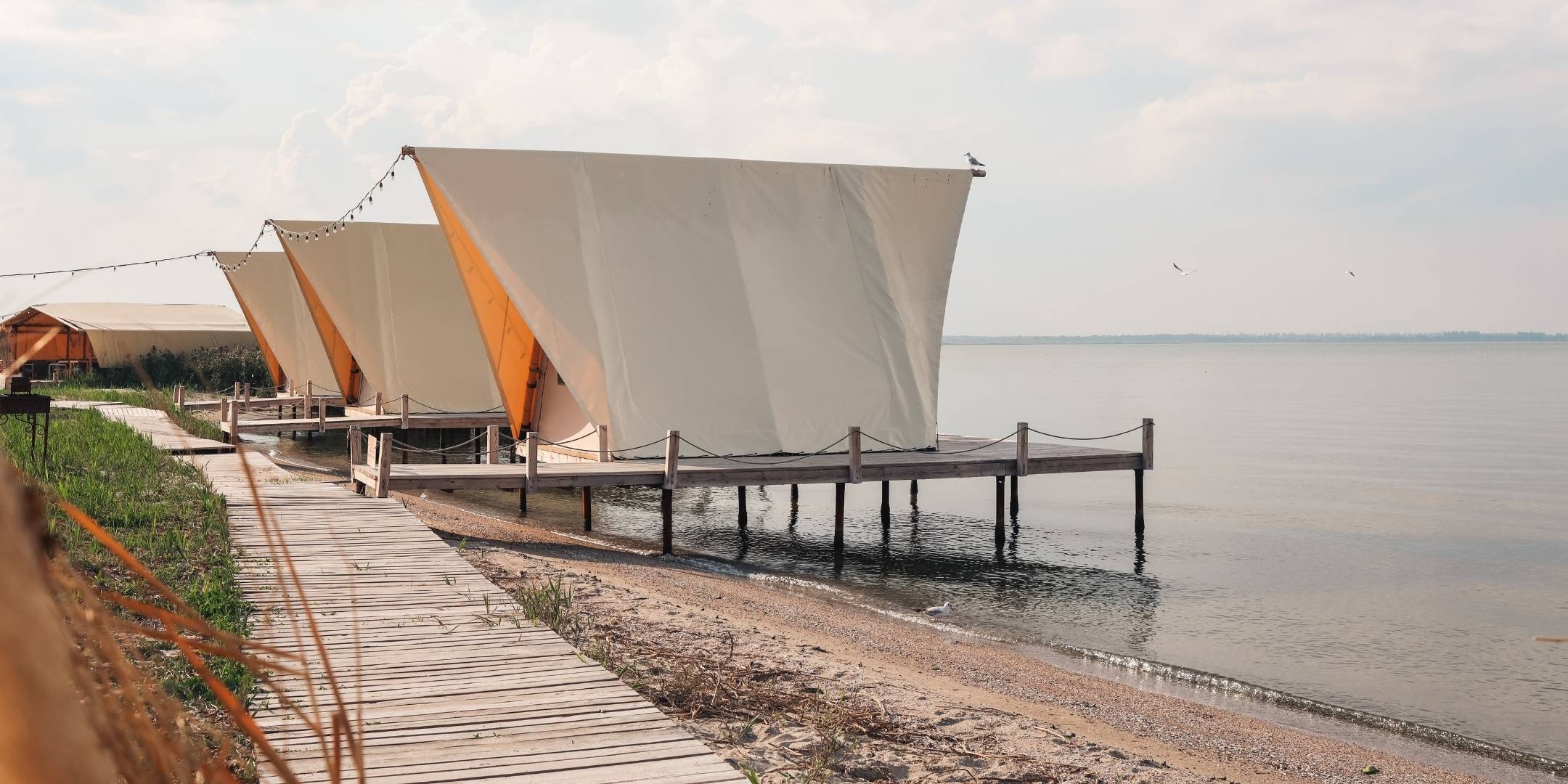In recent years, glamping has emerged as one of the leading trends in tourism and hospitality. It attracts travelers interested in experiences that combine comfort and contact with nature. Explore the details of this particular form of tourism and what it means for the hospitality industry.
Integrating nature with luxury

Nature tourism has many fans around the world. For many, there is nothing like waking up in the middle of natural, isolated surroundings. However, for many others, the allure of nature comes with its drawbacks. Camping requires advance preparation and planning. It also involves compromises on the part of travelers regarding their expectations of comfort.
This is where glamping comes into play. This accommodation option combines the feeling of freedom and encounter with nature with comfortable and even luxurious conditions. The key to this balance is to offer useful and enjoyable services for the guest that respect the natural environments in which they are immersed.
Properties of this type rely on various forms of accommodation. The most commonly used ones include:
- Stores.
- Cabins.
- Capsules or pods.
- Tree houses.
- Caravans.
These places should offer amenities that meet the comfort needs of their guests, such as electricity, bathrooms, cooking facilities, air conditioning and Internet access.
Now that you know what glamping is and what it offers its guests, let’s see how it fares in the market.
Glamping market performance

Its popularity is evident, but how thriving is the glamping market? According to research firm Grand View Research, this global market was valued at $2.35 trillion in 2021. It is estimated to grow at a compound annual growth rate of 10.9% between 2022 and 2030.
What are the factors that influence this great performance?
Guest interests
Grand View Research says the largest segment of the glamping market is people aged 18-32. This group was responsible for 44.5% of total global revenue during 2021.
In terms of generations, millennials are the most inclined to luxury experiences in a natural setting. This is because they are more interested in experiencing things than buying things. They also have the resources to invest in these types of hotel properties.
Other sources say that the next segment of guests that will see considerable growth in the coming years is that of people between 33 and 50 years of age.
Additionally, some tourism trends that speak to the interests of glamping guests are:
- Adventure tourism.
- Ecotourism.
- Wellness tourism.
- Music festival tourism.
Cabin and capsule domain
As mentioned, properties in this type of accommodation can offer a variety of accommodation options. Grand View Research points out that cabins and pods are the most popular. During 2021, they accounted for 46% of the market.
This behavior is due to guests seeking immersive experiences without sacrificing comfort or luxury. Established businesses in the field have seen more interest in this type of accommodation for years.
In particular, eco-pods have become attractive options for environmentally conscious travelers. The nature-conscious trend has also permeated other aspects of glamping . For example, these businesses often operate using local or recycled resources.
Insights for managing a glamping

Today, Europe is estimated to be the region with the largest share of the global market for this type of accommodation. However, other places around the world are flourishing in this field. For example, there are unique glamping options in Latin America in the mountains of Cusco or in the Mayan jungles .
Likewise, countries with great natural resources are exploring their appeal. Currently, travelers can find glamping in Colombia in lakes, mountains, valleys and even deserts.
The performance of this dimension of the hotel industry leads us to ask: what should we do to successfully manage a glamping site ?
Personalization
Offering differentiated and individualized services is key in a hotel of this kind. This not only satisfies the customer, but also helps achieve another goal of the segment: promoting an experience.
Distribution
The best businesses leverage the popularity of these properties by using a variety of distribution channels. Like traditional hotels, glamping sites should be offered through online travel agencies, metasearch engines and proprietary booking engines .
Additionally, a good distribution strategy is supported by a solid channel manager .
Diffusion
Social media is key to exploiting this tourism trend. Thus, a business in this field must show its facilities, surroundings and the unique experience it offers as much as possible. It must also have strategies to encourage its guests to do the same and thus replicate their personal experience.
Operation
Although it is a special type of property, a glamping site needs to operate efficiently. Therefore, it benefits from technological tools that help other establishments in the industry operate. This is the case of Property Management Systems (PMS) or POS systems, for example.






